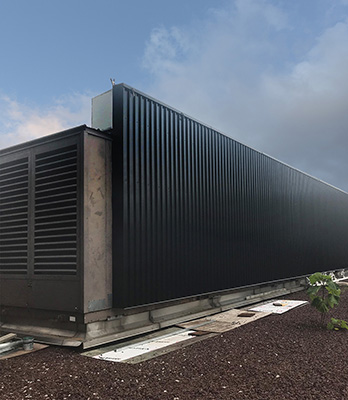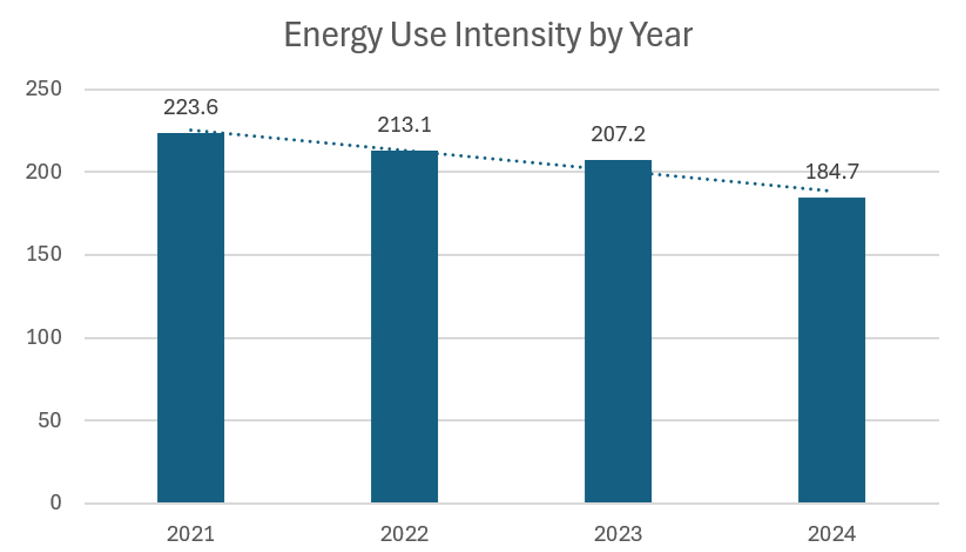Overview:
 New York State buildings, including hospitals, are working to meet the state’s mandate of achieving 11 trillion BTU of energy savings by 2025. However, hospitals face particular energy-related challenges that will require an ongoing commitment to meet the state’s energy efficiency mandate. Hospitals are the most water-intensive facilities in the country, representing seven percent of all commercial and institutional use. According to the U.S. Environmental Protection Agency, inpatient healthcare ranks as the second-largest commercial energy user, after the food service industry. Hospitals must address these issues – and continue to conserve water and energy, and minimize costs – without compromising the care they deliver to their communities.
New York State buildings, including hospitals, are working to meet the state’s mandate of achieving 11 trillion BTU of energy savings by 2025. However, hospitals face particular energy-related challenges that will require an ongoing commitment to meet the state’s energy efficiency mandate. Hospitals are the most water-intensive facilities in the country, representing seven percent of all commercial and institutional use. According to the U.S. Environmental Protection Agency, inpatient healthcare ranks as the second-largest commercial energy user, after the food service industry. Hospitals must address these issues – and continue to conserve water and energy, and minimize costs – without compromising the care they deliver to their communities.

Goals 2025:
- Complete of application for completive third-party (e.g., NYSERDA) grant to fund project that includes installing water-to-water heat pumps that will pre-chill chilled water returns before they go back to the East Campus Power Plant, and heating hot water reheats with the waste heat
- Completion of the N6 cooling tower replacement with new efficient air-cooled chiller
- Continuation of the Hospital Towers Curtain wall to realize energy savings
- Tentative: Air handler and VAV design, levels 1-5 Hospital network floors, blue side
- Tentative: N8 chilled reheat pump design
Highlights:

Stony Brook Medicine has a capital project in progress to replace the exterior of the Hospital Towers. In 2024, 32% of the project was completed. The entire project is scheduled to be completed by 2026. The project scope consists of replacing the existing spandrel panels, which included a ¼” monolithic spandrel glass set into a neoprene gasket “zipper” system. The surface area of the entire project consists of approximately 6,000,000 square feet. Each existing panel is being replaced with a new more thermal-resistant panel system. Attached is the thermal analysis provided by a consultant engineer. We took a thermal image of the towers on a 30-degree day and the new panel system provided a 20-degree difference compared to the old one.
Stony Brook Medicine has a continuous retro-commissioning process in place for the building management system. The building management system is monitored 24/7 and the expectation is that all systems run in automatic mode. When a building cannot operate in automatic mode, a work order is entered into the work order management system. The work order is then given to the Building Management System vendor to take corrective action. The corrective actions are expected to be made within a 15-day window. HVAC system components operate air handler dampers in economizer mode utilizing return air or outside air depending on the outside air temperatures. The air handlers operate on a discharge air reset based on outside air temperatures. All air handlers and pumps have had VFDs installed and operate in automatic mode from pressure sensor setpoints. All mechanical systems are checked for leaks during daily rounding and leaks are repaired within 15 days. The individual VAV boxes are on a preventative maintenance schedule, verified and calibrated by the Building Management System vendor. The process has provided reliable and consistent energy savings.
Recognition:
The New York Power Authority (NYPA) awarded SUNY Stony Brook (including Stony Brook University Hospitals) the Outstanding Commitment to Energy Efficiency award! The award recognizes NYPA customers for their leadership and innovation in advancing clean energy projects throughout New York State.
“SUNY Stony Brook was selected as a recipient of this award for its continued focus on energy efficiency across an extensive campus. Stony Brook completed three energy master plans with NYPA and identified an estimated $16.9M in annual costs savings. The campus has continued to grow while also achieving a 20% reduction in campus-wide energy use intensity (EUI) and meeting Executive Order 88. Stony Brook shows no sign of slowing down and is currently updating its energy master plans to identify new opportunities to improve efficiency, reduce emissions and upgrade critical infrastructure.”
Team:
Melissa Murphy, Michael Cullen, Nikki Hamblin, John Pluchino, James Prudenti
Policies:
Operating Room Energy Conservation Policy and Procedure

